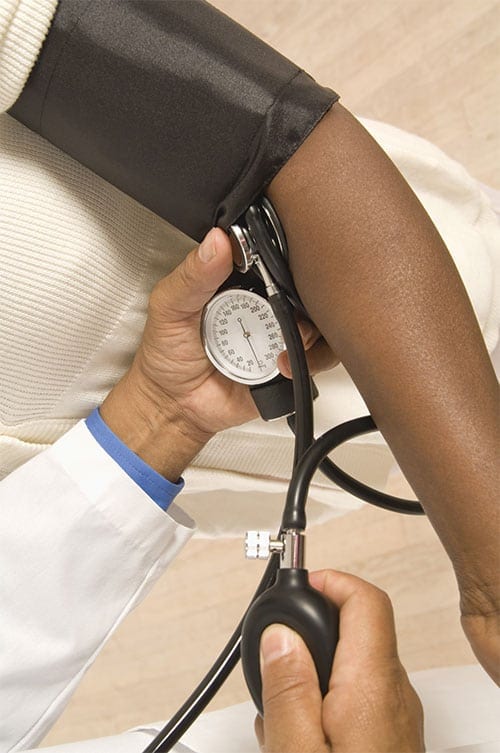
December 2017 was another busy month in clinic. One particular Tuesday Mr. T, a gentleman I met at the beginning of my training in Internal Medicine, was my last patient of the day. He attends clinic frequently to monitor a number of health issues, including his high blood pressure. We worked together to get his blood pressure under control with a number of lifestyle modifications by setting him up with a nutritionist, and eventually starting him on medication. Through multiple visits, we saw his blood pressure slowly decrease below 140/80, the guideline directed goal at that time. This was a huge accomplishment for us both. In primary care, we rarely see the immediate satisfaction that a surgeon would feel after resecting a cancer or removing an appendix. Our focus is toward preventive health, which carries a sense of delayed gratification. Therefore, to see Mr. T’s blood pressure controlled was a culmination of our many visits, a number of resources and most importantly, his hard work.

Author: American Heart Association’s Journal HypertensionKnow your blood pressure.
About one month before the appointment with Mr. T in December, the American Heart Association and the American College of Cardiology, two major health advocacy and policy organizations, came together and created an almost 200-page document lowering the definition of high blood pressure by 10 points from greater than 140/90 to greater than 130/80. This decrease may seem small or unimportant, but this means millions of people who were previously classified as having elevated blood pressure are now given the diagnosis of having high blood pressure. It is estimated that this new definition will cause 46 percent of the American population to carry a diagnosis of high blood pressure, including my patient Mr. T.
Creating new guidelines is no small feat. These organizations formed an expert panel and reviewed hundreds of studies before coming to a consensus and publishing their findings. They found decreased health complications if people were treated for high blood pressure earlier and had a lower target blood pressure. It is important to understand that these findings are scientifically sound and are meant to reduce the long-term health consequences of uncontrolled blood pressure. The new guidelines have a stronger focus on lifestyle modifications including ─ but not limited to ─ exercise, diet, smoking cessation and limiting alcohol use. Even with the strenuous process to create guidelines, the change has caused some controversy in the medical community causing organizations like the American Academy of Family Physicians and American College of Physicians to be highly critical.
During my December visit with Mr. T, we had a lengthy discussion regarding his blood pressure, the old and new definitions and guidelines, additional lifestyle modifications we could try and the risk and benefits of additional medications. This is what we primary care practitioners call shared decision-making, and I believe that is critical when new guidelines hit the press. While guidelines are important, no one on the expert panel knows Mr. T like I do. They did not account for his socioeconomic status or his fear of taking too many medications. That is why it is important to know the guidelines as well as the person, so you can make decisions that will actually make an impact. Given that it was holiday season, Mr. T and I ultimately decided to focus on his diet as opposed to increasing his medications dosage or adding a new medication. This was a decision we were both comfortable with and will continue to discuss in our future visits.
Guidelines are very important to physicians. They can help shape our practice and help us make decisions based on of researched scientific data. However, it is important that when you and your doctors are making medical decisions, specifically about newer guidelines, you have an open and honest discussion. Ask questions about risk and benefits. Ask questions about the new guidelines and how they compare to the old guidelines. Ultimately, you want to come to a decision that makes both parties comfortable and improves your health. The doctor-patient relationship is really a partnership with the goal of “let’s stay healthy, together.”
Here are the five things to help start the discussion with your primary care doctor regarding blood pressure.
1.What is high blood pressure?
- Blood pressure is the measure of the force of blood against blood vessels
- Blood pressure is measured with two numbers, called systolic and diastolic pressure. Systolic pressure is the top number and diastolic pressure is the bottom number.
2.High blood pressure can affect your entire body
- Blood vessels are found throughout the body
- High blood pressure raises the risk of heart attacks, stroke risk, kidney failure, heart failure, erectile dysfunction and dementia
3.Life style modification can be the first step before medication.
- These include things like losing weight, reducing salt, increasing exercise, stop smoking and limit alcohol
4.You can start life style modifications before you are diagnosed with hypertension
- Creating healthy habits early can prevent health problems in the future
Jason A. Sherer, M.D., M.P.H., Internal Medicine, Boston Medical Center






